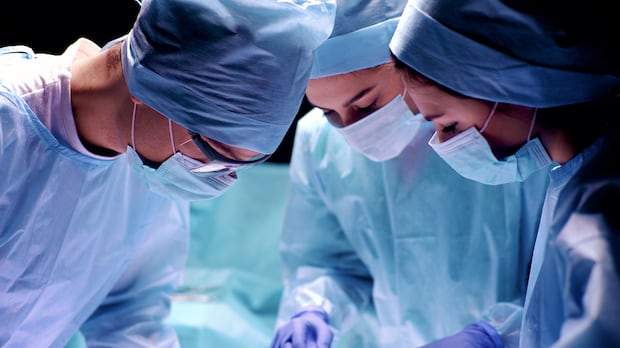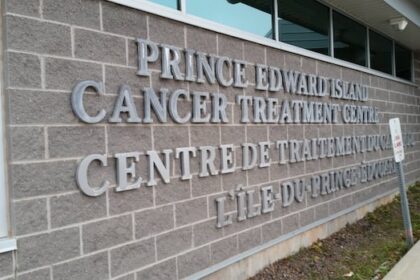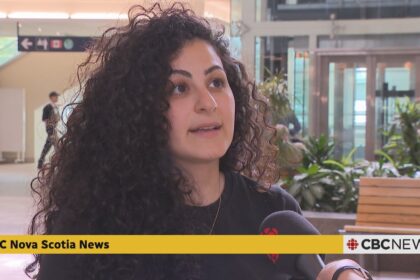Nova Scotia·NewSome American anatomy professors are encouraging Dalhousie University students to find different ways to get hands-on experience in the field after Dal announced it would not be using cadavers this year. Dalhousie closes cadaver lab for the school year after failing air quality testsCarolyn Ray · CBC News · Posted: Oct 16, 2025 5:00 AM EDT | Last Updated: 1 hour agoA human donor is often considered a student’s ‘first patient,’ says an anatomy professor. (lenetstan / Shutterstock)Some American anatomy professors are encouraging Dalhousie students to find different ways to get hands-on experience in the field after the Halifax university announced it would not be using cadavers this year. The school has temporarily stopped working with donated bodies after the laboratory in the Tupper Building on the Halifax campus failed air quality tests over the summer. Formaldehyde levels were higher than what is allowed in Nova Scotia.Dalhousie has told students it is leaning on videos, using skeletal material and anatomical models to teach anatomy this year. For Jessica Byram, working on her first donor was so profound, she decided to pursue a career in anatomy. “They’re obviously going to go on and be wonderful doctors,” she said of the Dalhousie students. “But I think it’s an experience that students should be able to engage with and be able to understand the impacts of what it means to be able to care for a person.” Jessica Byram says working on donor bodies helps bring a sense of humanity and respect into the classroom. (Submitted by Jessica Byram)Byram is now an associate professor of anatomy at the Indiana University School of Medicine. She said there are many schools that no longer work with cadavers largely because of the cost and the struggle to get enough donors to sustain a program. Byram said many in her field argue that students will receive an equal education through alternative teaching methods, but she disagrees. “We always call our donors our student’s first patient,” she said. “We can dissect a lung of someone who was a smoker and see the evidence of smoking, and it is really a pretty jarring, emotional experience to see the effects of smoking on the lungs. So I do think that’s a really meaningful aspect of the dissection process.” Derek Harmon is an advocate for technology. He uses 3D printing and virtual reality to teach his anatomy students at Ohio State University. Despite that, he said nothing replaces the experience of working with a donor. Derek Harmon believes there’s a balance between using technology and hands-on practice when it comes to anatomy classes. (Submitted by Derek Harmon. )”Imagine if you had a mechanic that was learning to take apart a car and put it back all together. Would you want them to learn that just through a computer interface?” he said. He said his colleagues have produced some of the videos that are now being used as teaching tools across North America. “But I think it lends a lot more to memorizing and cramming the information to get it out for the exam, and because of that mechanism and how they learn it, it quickly leaves their brain as they move on to the next thing.” Instead of depending solely on technology and models, Byram suggested students push for surgical rotations in the field so they can gain some real anatomy experience. She said that way, they don’t miss out on the nuance of how different bodies can be, such as the branching of blood vessels or the location of specific muscles. “Being in a lab with a bunch of different donors allows them to appreciate that it is a little bit more complex and be able to expect variation.” Byram said the issue of formaldehyde exposure is becoming a significant conversation in the industry. Formaldehyde is used to preserve the cadavers, and helps prevent mould. But it’s also a known carcinogen. Byram said some in the industry are working on new formulas to minimize the use of the chemical, but progress is slow. “It’s just somewhat of a tricky thing because you don’t want to test [new formulas] on a donor just because there’s always a supply and demand issue with the number of bodies you have in a donor program,” she said. Air quality testing showed the anatomy lab in the Tupper Building had levels of formaldehyde above Nova Scotia’s acceptable standards. (Grey Butler/CBC)Dalhousie declined an interview request from CBC News this week, but it said in a letter to students that it is considering new methods to preserve bodies as an option in the future. It is also looking at ways to renovate the lab. It said it tried changing the existing ventilation system, but further testing also failed to meet Nova Scotia’s acceptable air quality standards. It will continue to accept donations to the human body program while it works on the long-term solution. Harmon said updated ventilation systems can be extremely expensive, but a worthwhile investment. He said there needs to be a balance between technology and hands-on work. “I think these students will see it as a ‘rite of passage’ as well that they are missing,” he said.MORE TOP STORIESABOUT THE AUTHORCarolyn Ray is a videojournalist who has reported out of three provinces and two territories, and is now based in Halifax. You can reach her at Carolyn.Ray@cbc.ca
‘Our student’s first patient’: Why some experts say working with cadavers is essential












